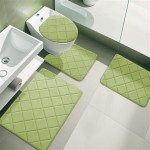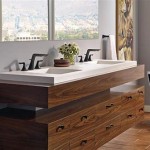Mold On Sheetrock In Bathroom: Prevention, Removal, and Remediation
Mold is a common problem in bathrooms, where moisture and humidity levels are high. While some mold is harmless, other types can cause health problems, such as respiratory issues, allergies, and asthma. If you find mold on sheetrock in your bathroom, it's important to take steps to remove it and prevent it from coming back.
Causes of Mold Growth on Sheetrock
Mold grows in damp environments, so any area of your bathroom that is consistently wet or humid is at risk for mold growth. Common causes of mold on sheetrock in bathrooms include:
- Condensation from showers and baths
- Leaks from faucets, pipes, or fixtures
- Poor ventilation
- Wet towels or clothing left on the floor
- High humidity levels in the bathroom
Health Risks of Mold Exposure
Exposure to mold can cause a range of health problems, including:
- Respiratory problems, such as asthma, bronchitis, and pneumonia
- Allergies, such as hay fever and eczema
- Eye irritation and redness
- Headaches and fatigue
- Nausea and vomiting
If you have any of these symptoms and suspect that you may have been exposed to mold, see your doctor immediately.
How to Remove Mold from Sheetrock
If you find mold on sheetrock in your bathroom, it's important to remove it as soon as possible to prevent the growth from spreading and causing health problems. To remove mold from sheetrock, you will need the following materials:
- Bleach solution (1 cup bleach per gallon of water)
- Sponge or cloth
- Bucket
- Gloves
- Eye protection
To remove the mold, follow these steps:
1. Put on gloves and eye protection. 2. Mix the bleach solution in the bucket. 3. Dip the sponge or cloth in the bleach solution and scrub the moldy area on the sheetrock. 4. Rinse the area with clean water and dry it thoroughly. 5. Repeat steps 3 and 4 until the mold is completely removed.How to Prevent Mold Growth on Sheetrock
Once you have removed the mold from the sheetrock, it's important to take steps to prevent it from coming back. Here are some tips:
- Keep the bathroom clean and dry. Clean the bathroom regularly, and be sure to dry any wet surfaces, such as the shower or bathtub.
- Ventilate the bathroom. Open the windows or turn on the exhaust fan when you shower or bathe to remove moisture from the air.
- Fix leaks promptly. If you find a leak in your bathroom, fix it immediately to prevent moisture from seeping into the sheetrock.
- Use a mold-resistant primer and paint. When painting the bathroom, use a mold-resistant primer and paint to help prevent mold growth.
When to Call a Professional
If you have a large area of mold on sheetrock, or if you are unable to remove the mold yourself, it is important to call a professional. A professional mold remediation company can safely and effectively remove the mold and prevent it from coming back.

Black Mold Removal And Prevention In Bathroom

Removing Mold From Drywall A How To Guide Forbes Home

Black Mold In Bathroom How To Fix Damaged Drywall Doityourself Com Community Forums

The Ultimate Guide On How To Clean Mold Drywall
Are Most Mold On The Surface Of Bathroom Ceiling Outside Drywall Or They Coming Within Quora

Bathroom Mold How To Identify And Get Rid Of In Environix

Mold On Drywall Can Moldy Be Cleaned

Ceiling Mold Growth Learn The Cause And How To Prevent It Environix

Mold On Walls Our Guide To Identification And Removal

Mold On Drywall How To Remove From Wall Mould Facts







